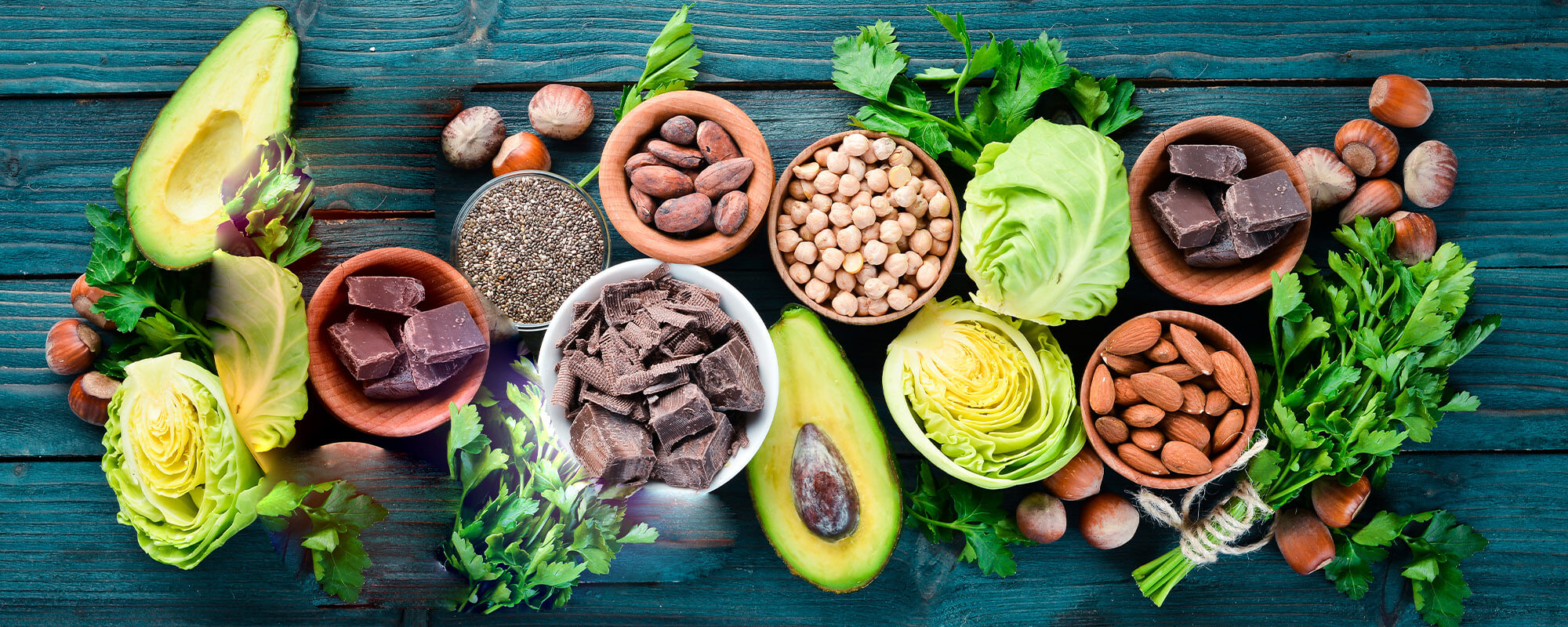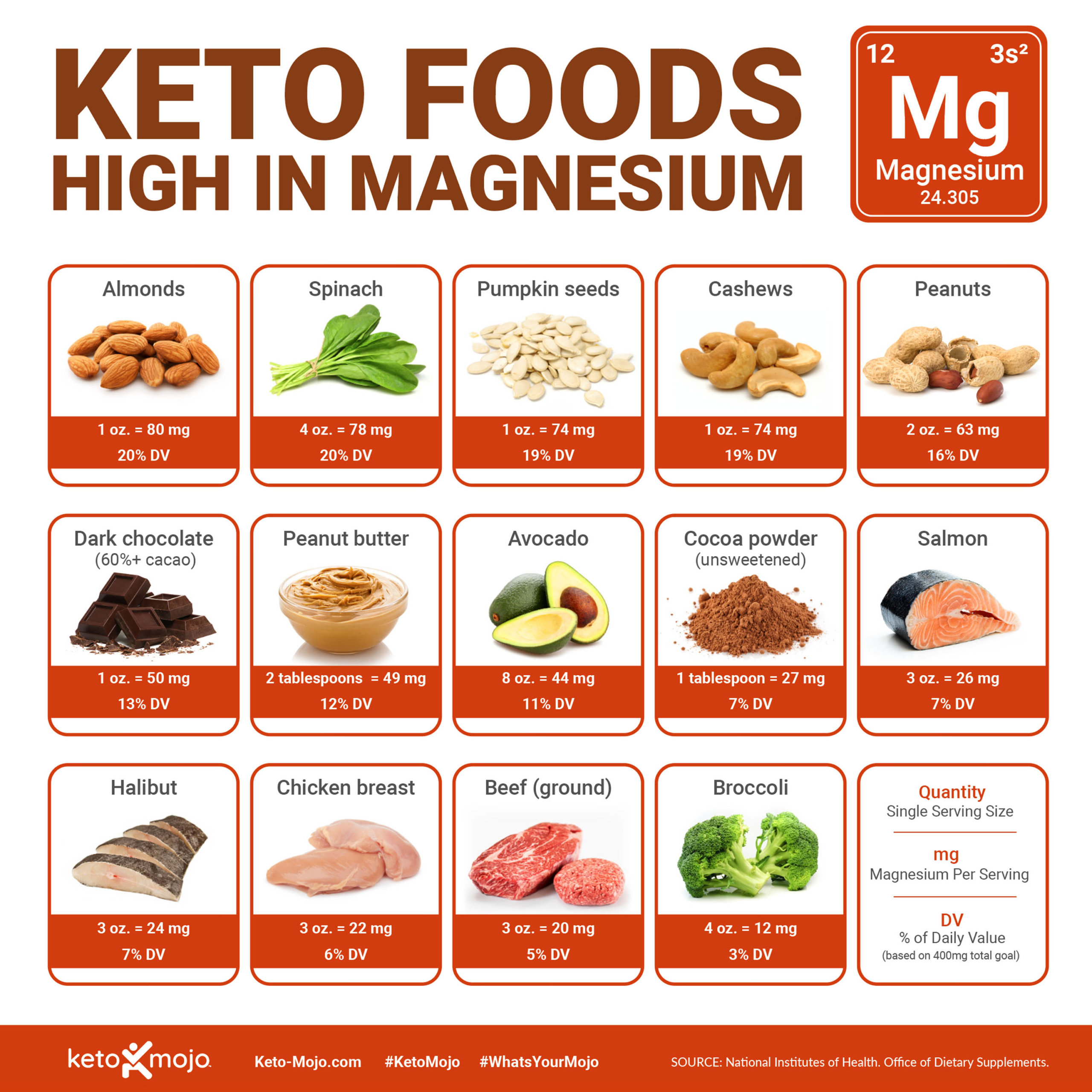What’s the best type of magnesium for keto dieters? And why are there so many different types of magnesium supplements on the market? Magnesium is an essential mineral and electrolyte your body needs for over 300 daily bioactivities. But since your body can’t make magnesium, you must get it from your diet. And that’s easier said than done. Studies show half of Americans don’t meet their daily magnesium goals. After all, you won’t find magnesium listed on nutrition facts. And it’s rarely recorded by popular food-tracking apps. So, how do you know if you’re getting enough of this important mineral? Many keto dieters rely on magnesium supplements instead of guessing. This article explores why supplementing with the right type of magnesium may be a game-changer for your keto diet.
Why is Magnesium Important?
Your body cannot function without magnesium. It’s involved in energy production, blood sugar control, blood pressure/heart rhythm regulation (heart health), bone health, and so much more. It can even be helpful for heartburn. Magnesium is also crucial for your mental health and a healthy sleep routine. In other words, magnesium is important for your healthcare and wellbeing.
Men should aim for 400 to 420 milligrams of magnesium per day. Women have a daily intake goal of 310 to 320 mg of magnesium.
Here’s the problem for keto dieters: Many magnesium-rich foods are high in carbs. Cereal, beans, gluten-laden bread, potatoes, and rice, all of which contain good amounts of magnesium, are off-limits. So how do you meet your magnesium goals while keto? Start with a healthy diet.
There are a number of wholesome, keto-friendly foods high in magnesium. If you’re following a clean keto diet, you are probably already eating some of them.
Keto Food Sources of Magnesium
Take a look at the chart below. You’ll see there are lots of good sources of magnesium that go beyond off-limit foods like whole grains, edamame, quinoa, black beans, and whole wheat.
Like what?
Cashews, dark chocolate, pumpkin seeds, peanut butter, avocado, halibut and mackerel (also great sources of Omega-3 fatty acids), leafy greens like swiss chard and kale, Brazil nuts, and the other tasty foods shown below have a high amount of magnesium content.
But even if you load up your keto meal plan with these natural sources of magnesium, you may still come up short, and that’s not good.
What Happens if You Have Low Magnesium Levels?
When your magnesium levels plummet, you may feel like you have the flu. Prepare for appetite loss, nausea, fatigue, weakness, constipation, and the potential for vomiting. Muscle cramps and midnight Charlie horses are also common with low magnesium levels. You may even feel abnormal heart palpitations.
The elderly, those with Crohn’s or celiac disease, type 2 diabetics, and people taking certain medications have a harder time absorbing and using magnesium from their diet.
Chronically low magnesium levels strongly correlate with an increased risk of death from all causes. They also raise your risk of developing:
- Alzheimer’s disease
- Insulin resistance and type-2 diabetes
- Migraine headaches
- Attention deficit hyperactivity disorder (ADHD)
- Depression
- Osteoporosis
- Asthma
- Hypertension (i.e., high blood pressure), cardiovascular disease, stroke, and sudden cardiac death
Do Magnesium Dietary Supplements Work?
Given the significant downsides to a magnesium deficiency and the pervasiveness of the deficit, it’s worth exploring a magnesium supplement. Magnesium supplements take the guesswork out of meeting your intake goals.
However, magnesium supplements may interfere with certain medications such as antibiotics, diuretics, and oral bisphosphonates. So it’s best to speak with your doctor first, just to be safe. Magnesium supplements are generally well-tolerated, though they can have side effects.
Common Side Effects of Magnesium Supplements
Magnesium draws water into the intestines, but different forms of magnesium have different resulting impacts of this influx of water. To find out which type of magnesium works best for you requires experimentation, as there is no universal “perfect” form. Individual bodies react differently to each version, and some people find a combination of magnesium types offer the optimal results.
The most reported side effects of taking magnesium include nausea, abdominal cramping, and loose stools (diarrhea). These are signs your body may not be absorbing optimal levels of magnesium in your intestines before the laxative effect strikes in your colon. If this happens, try splitting your dose in half. Hopefully it’ll be more absorbable if your body has to work to absorb a smaller quantity. Take one half in the morning and the other at night. Move on to a different type of magnesium if your reaction doesn’t improve.
Which Type of Magnesium is Best for You?
You won’t find pure elemental magnesium on its own. Magnesium must bind with something else to remain stable. That’s why there are so many types of magnesium supplements. Their differences stem not from the magnesium (that’s all the same), but from the binding molecule used in the supplement. So, what’s the best magnesium supplement to get a good dose of magnesium? That depends on how you react to the binding molecules.
Here’s a brief rundown of the most popular types of magnesium supplements. Keep in mind that supplements are not as strictly monitored and regulated by the Food and Drug Administration (FDA) as drugs are (they are regulated as food), so it’s always a good idea to buy supplements from a reliable company:
Magnesium Chelates
Chelated mineral supplements bind amino acids (the building blocks of protein) to minerals. Amino acids help your body absorb minerals before negative side effects kick in. With magnesium, amino acids provide additional health benefits and lessen its laxative effects. Chelated magnesium supplements are the most bioavailable. You’ll notice fewer side effects and may improve other areas of your health thanks to the amino acids. Downside: The complex manufacturing process means these will cost more than other types of magnesium.
The most popular magnesium chelates include:
- Magnesium Glycinate, which is magnesium bound with glycine. Glycine increases bioavailability, and it’s also a relaxing neurotransmitter. It may bring stress relief and better sleep quality. Magnesium glycinate is less harsh on your system than other forms.
- Magnesium L-threonate binds magnesium with l-threonate, a sugar acid found in capers, huckleberries, and pecans. Magnesium L-threonate is the only type that crosses the blood-brain barrier. So magnesium L-threonate may support brain health, reduce migraine headaches, improve memory, and reduce the risk of dementia and Parkinson’s. In studies, magnesium L-threonate helped rats learn and retain new information and reduced pain.
- Magnesium Malate is magnesium bound with malic acid, which you’ll find in oranges, apples, and pears. Malic acid helps your cells produce and use energy. It’s also known to relax tense muscles and helps fibromyalgia patients manage pain. Plus, magnesium malate is friendlier on your wallet than other magnesium chelates.
- Magnesium Orotate is magnesium bound with orotic acid. Studies show it may improve athletic performance. Magnesium orotate may also decrease heart failure symptoms (like high blood pressure), increase survival rate, and provide a better quality of life.
- Magnesium Taurate is magnesium bound with the amino acid taurine. In one study, supplementing with taurine helped patients with heart disease exercise longer and farther. Combining magnesium with taurine may also prevent heart disease.
- Magnesium Aspartate is magnesium bound with aspartic acid. But animal research shows aspartate may destroy brain cells and impair memory. Avoid this one.
Magnesium Citrate
Magnesium citrate is magnesium bound with citric acid. It’s the most common form of magnesium, making it widely available, affordable, and often recommended. Magnesium citrate helps tense muscles relax and combats nighttime leg cramps. But citric acid is a mild laxative so you may experience diarrhea.
Magnesium Oxide
When magnesium binds with oxygen, it forms magnesium oxide. Magnesium oxide has the highest concentration of elemental magnesium per dose. However, it’s one of the least bioavailable sources.
Because magnesium oxide isn’t easily or quickly absorbed, most of it goes right through you. When it hits your colon, it turns into a serious laxative. This is why you’ll find magnesium oxide in OTC products for constipation and indigestion, such as Milk of Magnesia.
Magnesium oxide shouldn’t be an everyday supplement. You won’t absorb enough magnesium to use for anything other than constipation relief.
Magnesium Sulfate
Magnesium sulfate is more commonly known as Epsom salts. People swear Epsom salts added to a warm bath help relieve muscle tension, aches, and pains. But studies have yet to prove how this works. You can take magnesium sulfate orally, just beware of the laxative effect.
Magnesium Chloride
Magnesium chloride flakes mixed with water, coconut oil, or shea butter create magnesium oil. You can rub magnesium oil into your skin like lotion to target cramping muscles and pain directly. The other healthy ingredients may also help your skin glow.
The Final Word
Magnesium is one of the best supplements for a keto diet. Meet your intake goal and you may face less fatigue, muscle cramping, anxiety, and trouble sleeping. Supplementing may even bypass or lessen the effects of the keto flu.
Ask your doctor or dietitian about supplementing with magnesium before you begin experimenting, especially if you’re taking prescriptions or other medications daily. When you get the green light, start with a magnesium chelate for maximum bioavailability and fewer side effects. You may need to try a few before you find the right type of magnesium for your body to thrive in ketosis. But the results will feel well worth the effort!



